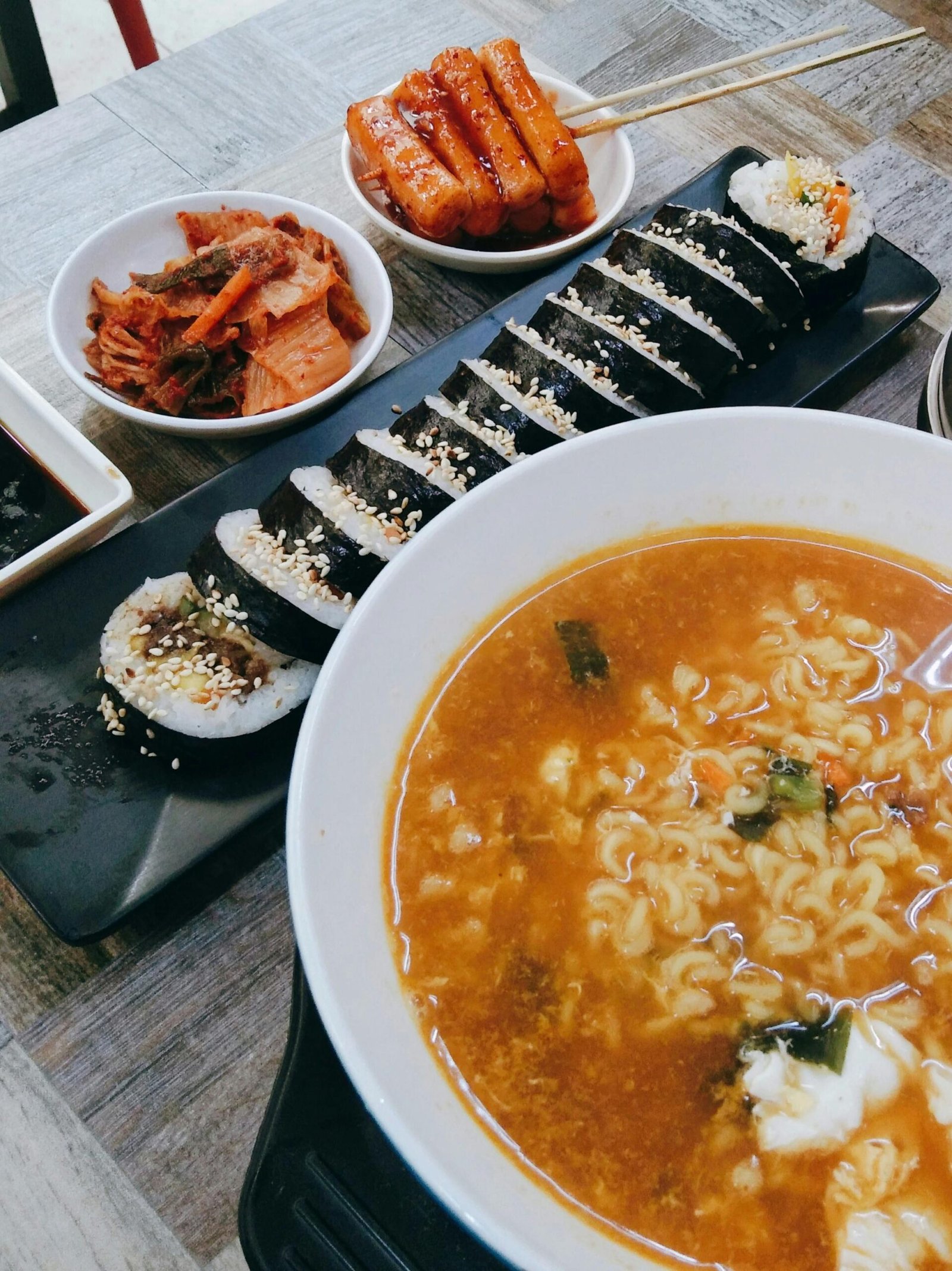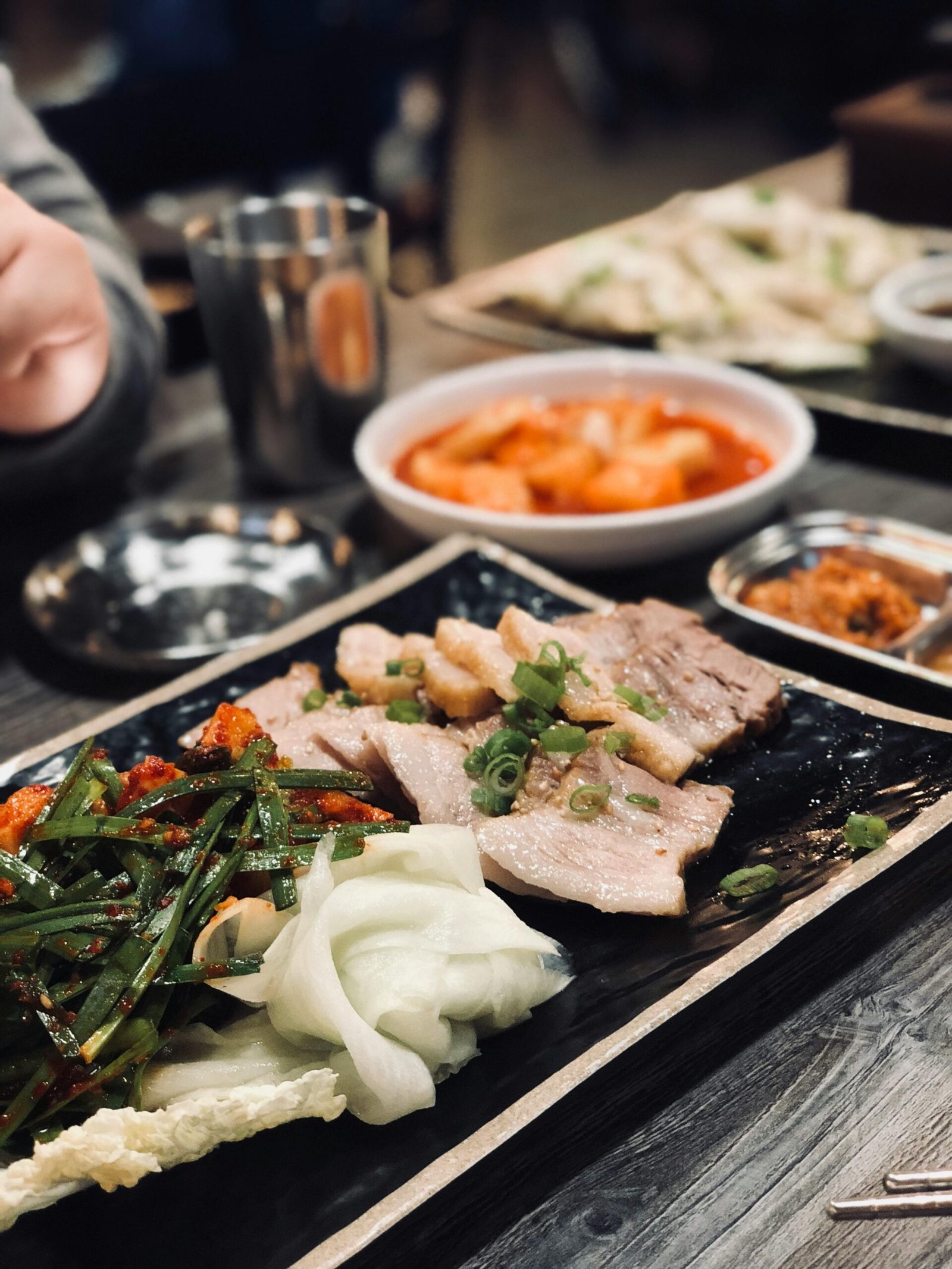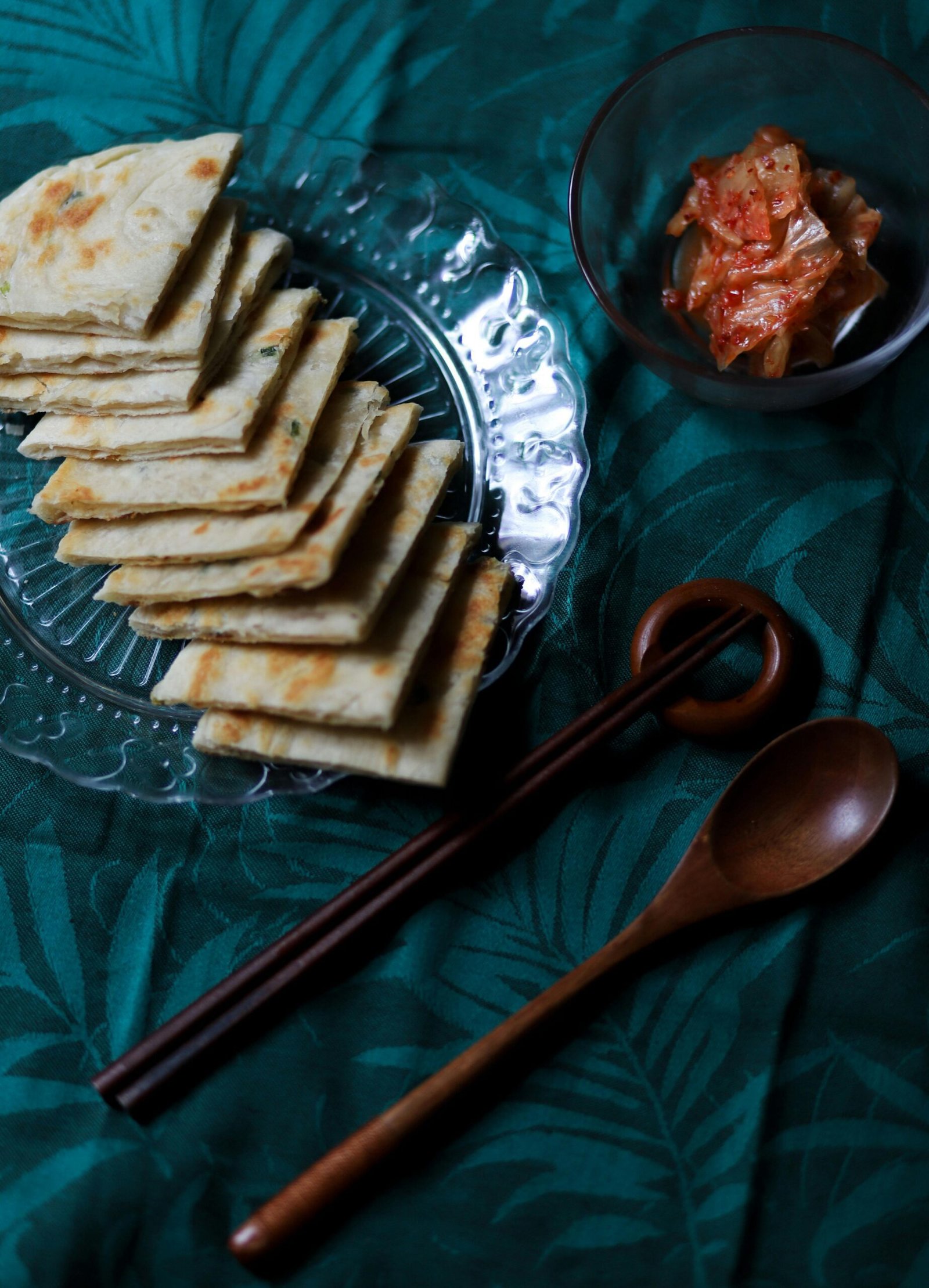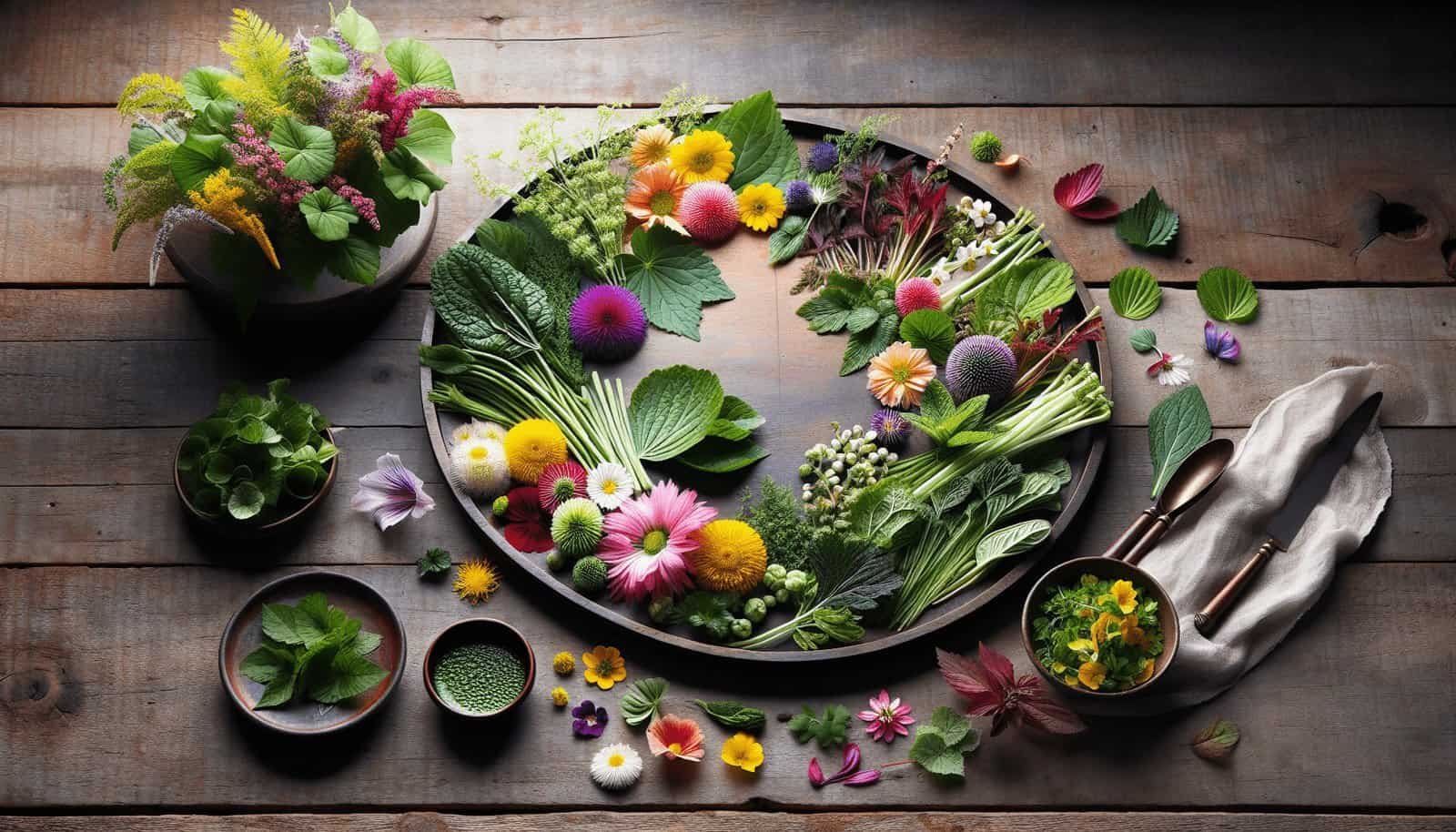Can you share innovative ways to use Korean herbs and edible flowers in dishes? If you’re intrigued by the vibrant flavors and beautiful aesthetics of Korean cuisine, incorporating Korean herbs and edible flowers into your dishes can add a refreshing twist. These ingredients not only offer visual appeal but also bring unique flavors and health benefits to your meals. Let’s explore some creative and innovative ways to integrate these natural gems into your culinary creations.

The Rich World of Korean Herbs
Understanding Korean Herbs
Korean herbs, often known as “namul,” are leafy green vegetables and herbs used in various Korean dishes. They are packed with flavors ranging from mild and grassy to pungent and spicy.
Some common Korean herbs include:
| Herb | Description | Common Uses |
|---|---|---|
| Perilla Leaves | Minty, slightly bitter | Wraps, salads, garnishes |
| Mugwort (Ssuk) | Aromatic, slightly bitter | Teas, soups, rice cakes |
| Korean Mint (Hyssop) | Sweet, licorice-like | Teas, soups, garnishes |
| Sesame Leaves (Kkaennip) | Peppery, basil-like | Wraps, pickles, stir-fries |
Health Benefits of Korean Herbs
These herbs not only pack a punch in terms of flavor but also come with numerous health benefits. For example, mugwort is known for its digestive aid properties, perilla leaves are rich in omega-3 fatty acids, and Korean mint can help with respiratory issues.
Creative Uses of Korean Herbs
Perilla Leaf Pesto
Perilla leaves can be transformed into a delightful pesto that adds an Asian twist to a traditional Italian condiment. Blend fresh perilla leaves with garlic, pine nuts, Parmesan cheese, and olive oil. This pesto can be used as a topping for pasta, a spread for sandwiches, or a dip for vegetables.
Mugwort-Infused Soup
Mugwort adds a unique aroma and flavor to soups. Boil some mugwort leaves in a broth made from beef or chicken bones. Add tofu, clams, and slices of radish for a nutritious and warming soup perfect for a cold day.
Korean Mint Tea
Korean mint, also known as Hyssop, makes a soothing and refreshing tea. Simply steep fresh or dried hyssop leaves in hot water for a few minutes. You can add honey for a touch of sweetness. This tea is excellent for calming an upset stomach or enjoying a relaxing sip before bedtime.
The Beauty and Flavor of Edible Flowers
Common Edible Flowers in Korean Cuisine
Edible flowers are not just for garnishing; they add subtle flavors and aromatic notes to dishes. Here are some that are commonly used in Korean cooking:
| Flower | Description | Common Uses |
|---|---|---|
| Chrysanthemum (Gukhwa) | Slightly bitter, tangy | Teas, soups, salads |
| Bellflower (Doraji) | Crunchy, slightly bitter | Salads, stir-fries, stews |
| Daylilies (Hemerocallis) | Sweet, crunchy | Soups, salads, garnishes |
| Azalea (Jindallae) | Mild, slightly sweet | Pancakes, drinks, decorations |
Health Benefits of Edible Flowers
Edible flowers offer various health benefits. For instance, chrysanthemum flowers are known for their antioxidant properties, aiding in detoxification and reducing inflammation. Bellflower roots have been traditionally used to soothe coughs and sore throats.
Innovative Uses of Edible Flowers
Chrysanthemum Flower Tea
Chrysanthemum tea is a popular herbal drink in Korea. To make, simply steep dried chrysanthemum flowers in hot water until the water turns a golden color. Serve it warm or cold, and add honey if you prefer a sweeter taste. It’s a refreshing drink that offers numerous health benefits.
Bellflower Root Salad
Bellflower roots, known as doraji in Korean, can be incorporated into a fresh and crunchy salad. Thinly slice bellflower roots and soak them in water to remove any bitterness. Toss them with julienned carrots, cucumbers, and a dressing made from soy sauce, vinegar, sesame oil, and a hint of garlic.
Azalea Pancakes
Azalea petals can be added to traditional Korean pancakes, or hwajeon. Mix rice flour with water to make a batter. Dip the azalea petals in the batter and fry them lightly in a pan. Serve them with a simple syrup made from sugar and water for a delightful dessert.

Blending Korean Herbs and Flowers into Western Dishes
Perilla Leaf Pesto Pasta
Integrate Korean and Italian flavors by using perilla leaf pesto on your pasta. Cook your favorite pasta and toss it with the perilla leaf pesto. Add a touch of lemon juice and some grated Parmesan cheese for an exotic twist on a classic dish.
Mugwort Bread
Mugwort can be used in baking, adding a unique twist to traditional bread. Incorporate dried mugwort powder into your dough mixture. The herb imparts a subtle bittersweet flavor and a beautiful green hue to the bread, making it not only flavorful but also visually appealing.
Chrysanthemum Sorbet
For a unique dessert, try making chrysanthemum sorbet. Infuse chrysanthemum flowers in boiling water, then strain and mix the infusion with sugar and lemon juice. Freeze the mixture, stirring occasionally to break up ice crystals. The resulting sorbet is light, floral, and perfect for a refreshing finish to any meal.
Fusion Recipes
Korean Herb Tacos
Give your tacos a Korean twist by using perilla leaves as wraps, adding marinated grilled meats, and topping with kimchi. You can also include fresh herbs like Korean mint for added depth of flavor.
Edible Flower Salads
Create vibrant salads by incorporating a mix of edible flowers like daylilies, chrysanthemums, and azaleas. Combine them with fresh greens, nuts, and a light vinaigrette. The flowers provide a mix of textures and flavors, making your salad visually stunning and delicious.
Herbal Infused Oils
Make herbal-infused oils using Korean herbs like perilla leaves or mugwort. Simply place the herbs in a bottle of olive oil and let them steep for a few weeks. These oils can be used for drizzling over salads, dipping bread, or adding a finishing touch to cooked dishes.

Tips for Using Korean Herbs and Edible Flowers
Proper Cleaning
Always thoroughly wash herbs and flowers under running water to remove any dirt or pesticides. Pat them dry with a paper towel before using them in your dishes.
Storing Fresh Herbs and Flowers
To keep herbs and flowers fresh, store them in the refrigerator. Wrap them in a damp paper towel and place them in a plastic bag. They should last for about a week.
Drying and Freezing
For long-term storage, consider drying or freezing herbs and flowers. Dry them by hanging in a cool, dark place or using a dehydrator. Freeze by spreading them on a baking sheet, then transfer to a zip-lock bag once frozen.
Conclusion
Integrating Korean herbs and edible flowers into your dishes opens up a world of culinary possibilities. Whether you’re making a traditional Korean dish or adding an exotic twist to a familiar recipe, these ingredients can elevate your cooking to new heights. Their unique flavors, textures, and health benefits make them not just a feast for the eyes but also for the palate and well-being. So, next time you’re in the kitchen, don’t hesitate to experiment with these vibrant and flavorful natural treasures. Your taste buds (and your dinner guests) will thank you!

